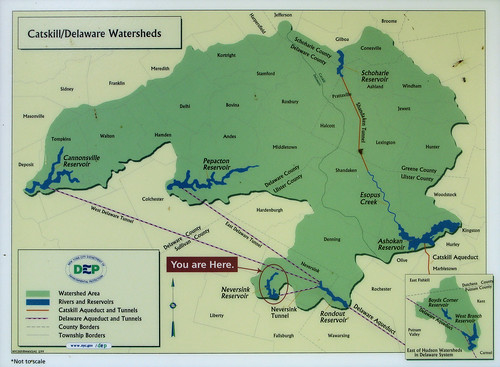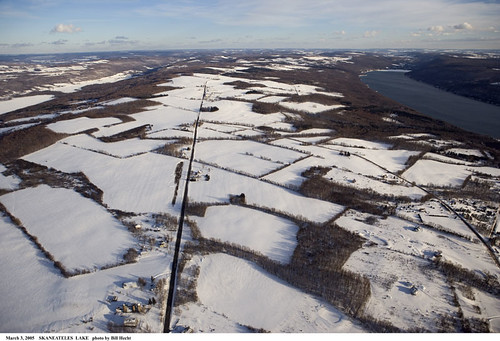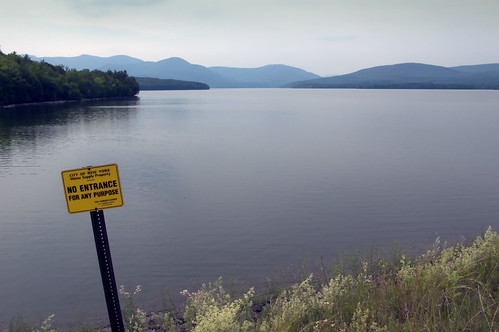These were the workers, most undoubtedly from out of state, who kept 115 rotary rigs actively drilling in PA, as of July 2011 — a gain of three rigs over the previous record from June 2011.
Ohio, meanwhile, appeared to be maybe showing a slight uptick, over the last few months, to 12 such rigs (though could still be early for trend-spotting). That was the statistical situation just a day after Chesapeake Energy confirmed months of rumors by finally announcing that the Buckeye State indeed holds commercially viable shale oil (on top of shale gas and natural gas liquids), and that the target rock there will actually be the deeper Utica, and not so much the storied Marcellus.
All this ebb and flow in drill rig numbers comes from the most conservative of the rig counts, as provided by oil patch service behemoth Baker Hughes, which released the North American stats at noon central time today (the same as it does every Friday).
A Google News check at this hour (it's now about 10 p.m. eastern time) shows that many media outlets are in the habit of running wire service copy reporting the weekly gains or losses of rigs working the U.S. or North America. But not a single Northeastern media outlet has yet taken notice specifically of PA's remarkable run — which now marks a trend that has consistently gone even or upward for 30 months (except for an apparent Mud Season hitch early in 2011).
Two other Appalachian states, both also holding conventional and unconventional fossil fuels, have still not yet shown anything like the giddy-up demonstrated by PA: West Virginia had 20 rotary rigs on hand, which is well within its usual tolerance, and New York had another 0. In fact, the last time NY had a rig working in-state big enough for Baker Hughes to find it, was back in December 2010.
Online records going back as far as 1987 show the oil and gas industry has never in modern times been so busy in the Keystone State — a rush that's mostly tied to a boom in horizontal drilling and hydraulic fracturing to produce natural gas from Marcellus shale. The now-two-and-a-half-year-old push in Pennsylvania is widely attributed to strategic, long-term desires to maintain thousands of leasehold acres — rather than have to purchase these all over again, due to expiration, due to inactivity.
A Google News check at this hour (it's now about 10 p.m. eastern time) shows that many media outlets are in the habit of running wire service copy reporting the weekly gains or losses of rigs working the U.S. or North America. But not a single Northeastern media outlet has yet taken notice specifically of PA's remarkable run — which now marks a trend that has consistently gone even or upward for 30 months (except for an apparent Mud Season hitch early in 2011).
Two other Appalachian states, both also holding conventional and unconventional fossil fuels, have still not yet shown anything like the giddy-up demonstrated by PA: West Virginia had 20 rotary rigs on hand, which is well within its usual tolerance, and New York had another 0. In fact, the last time NY had a rig working in-state big enough for Baker Hughes to find it, was back in December 2010.
Online records going back as far as 1987 show the oil and gas industry has never in modern times been so busy in the Keystone State — a rush that's mostly tied to a boom in horizontal drilling and hydraulic fracturing to produce natural gas from Marcellus shale. The now-two-and-a-half-year-old push in Pennsylvania is widely attributed to strategic, long-term desires to maintain thousands of leasehold acres — rather than have to purchase these all over again, due to expiration, due to inactivity.
One thing is for sure — it's not the market value of the natgas that's driving this train — what with futures still trading at industry-cheating, landowner-cheating, and grandchild-cheating prices of between $4 and $5 per MMBTU.
Despite this, national rotary rig numbers have continued on a non-stop upward trend. Some of that is due to oil work, which has stolen some investment from natgas. But, overall, the rig numbers keep insistently going higher: In the U.S., there were 1,900 rigs working on average in July — up from 1,863 the prior month. It's a number which has been consistently increasing for two years straight, since June 2009.
The chart above runs the data back to October 2004, the month when Range Resources quietly became the first driller in the Appalachian basin to stimulate a horizontal Marcellus well by pumping, under high pressure, a mixture of water, sand, and chemicals into the shalebed. Word of Range's surprisingly successful gas-finding results on this and follow-up wells did not get out widely until January 2008, when geologists Terry Engelder of Penn State and Gary Lash of SUNY Fredonia released a significant re-estimation of the natural gas content of the Marcellus formation.
Over this time frame of the shale gas revolution, the Baker Hughes rig counts are useful in offering a historical comparison of industry's boom or bust response to the varying economic times, geologic fortunes, and regulatory receptions posed by each of these four states. As you can readily see, drilling in Pennsylvania has nearly without exception been running even or higher every successive month since January 2009, for instance, but in New York, industry's interest in developing landowners' shale gas has been met with a regulatory holdup and a political firestorm.
In fact, New York, on July 23, 2011 reached the three-year mark for its infamous moratorium — a ban which began as a temporary administrative freeze on any full-scale Marcellus or Utica drilling permits, pending still-ongoing study of the environmental impacts, and the crafting of reportedly tougher rules. (Not a single media outlet made mention of that anniversary, either.)
- - - - - - - - - - - - - - - - - - - - - - - - - - - - - - - - - - - - - - - - - -
Baker Hughes has long kept a tally of active drilling rigs for both informational and promotional purposes. The counts trace their history to 1944, when they were initiated by predecessor Hughes Tool Company (whose founder Howard Hughes, Sr. invented the two-cone rotary drill bit). The Hughes company realized that its sales force generally knew (or could find out) the location by state or province of every single operating rotary rig in the United States or Canada — even those which weren't (yet) using Hughes tools.
The counts have been consistently maintained ever since, and they have become a barometer for the energy sector, and for the economy generally.
Baker Hughes' rig counts are considered more conservative than those broadcast by other outlets, because they only count active, rotary rigs — highly complex operations which are in the midst of placing substantial economic demands on the service, support, and labor sectors.
Rigs are only counted as active if they are being employed anywhere along the line between "spudding in" (or starting a well) and "target depth." Not counted are rigs that are in the process of being taken down, moved, or rigged up again, or rigs that are being used to support non-drilling chores, such as workovers, completions, or testing. Most relatively small, cable-tool and truck-mounted setups are also excluded from the census.














